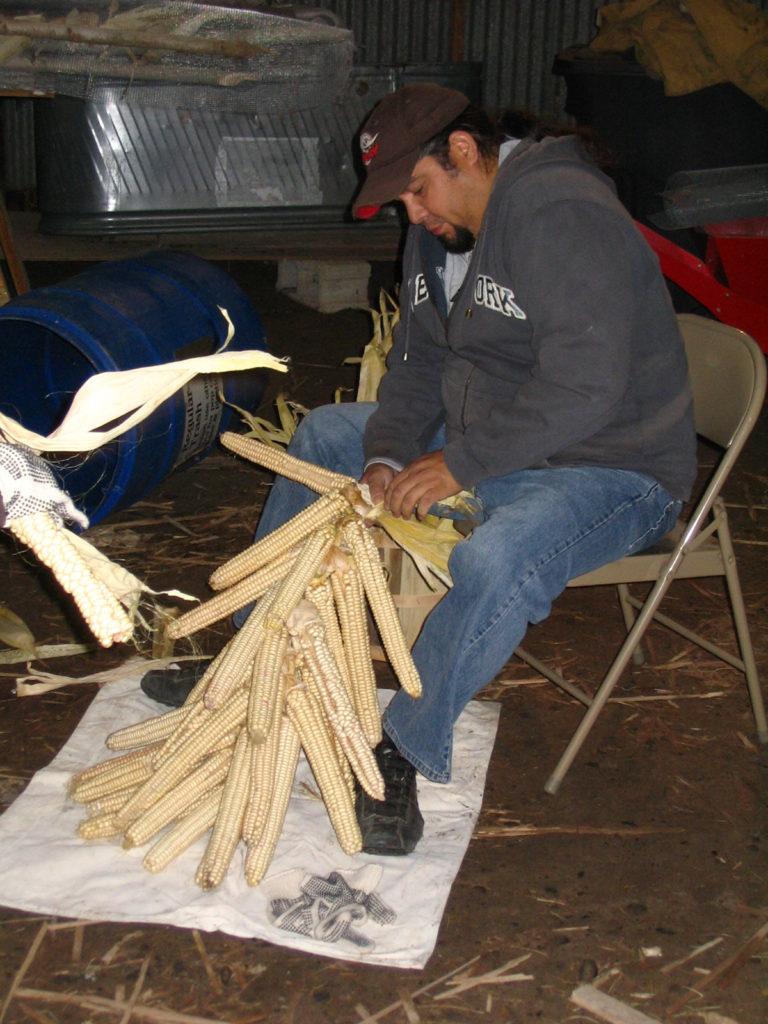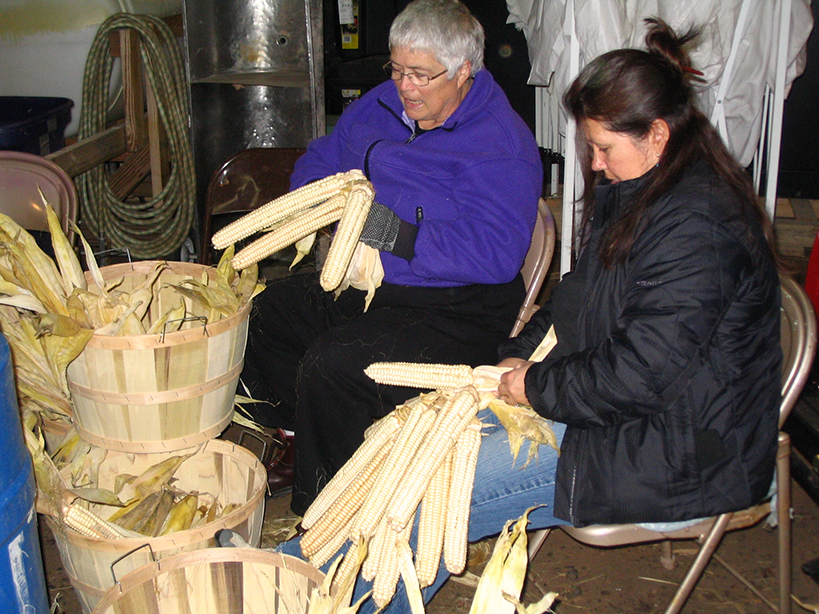Notes toward a Finger Lakes cuisine – part 1
by Stephen Lewandowski –The Roots of Finger Lakes cuisine
Over lunch and later, while hiking, I thought about the forest and the farms of the Finger Lakes that I had seen and how generations of people had been supported by foods produced by this land. Devising a cuisine for this place, giving full expression as a set of tastes, seemed like a good idea. After all, almost any local cuisine would be an improvement on the current “fast” food system that burns corn for home heat, runs on huge quantities of hydrocarbons and incorporates petroleum distillates and other preservatives into our food.
Our technology allows us to transport goods and communicate information in a way that increasingly homogenizes the world’s food and diet by making all edible things seem equally available. A supermarket in our area displays foodstuffs raised in the southern hemisphere and transported and stored in specialized environments, so that we can enjoy our favorite foods no matter what the season, so long as we can pay for the ingredients. Helpfully, the market posts recipes for unfamiliar foods that can be torn off at the same time that the foods are being bagged and weighed for purchase.
On another hand, our preferences for certain kinds of food are durable. Ethnic foodways are some of the longest lasting cultural components in “the melting pot.” When language, clothing, gesture and most other components of lifestyle have become Americanized, ethnic food preferences linger on.
As far as I know, no one in this particular corner of the melting pot called the Finger Lakes (roughly a 14 county area of 8,000 square miles around 11 lakes in

west-central New York State) has considered what would constitute our “regional cuisine,” so we are still free to imagine it. Before a Finger Lakes cuisine can even be approached, there are practical concerns and questions that require some tentative answers.
These questions deal with the availability of transported foods, the season of the year, how much theory versus how much practice will be involved, a distinction between native and imported crops (and native to which regions?), and the fidelity to/blending of other existing regional cuisines and ethnic diets. A regional cuisine predictably favors the native crops of the region over transported foods, while keeping the door open for others; addresses seasonal variability; offers both theoretical perspectives and practical suggestions; and avoids simply importing other ethnic foodways to fill in our own “gaps.” In addition, we should ask what this cuisine is for and to provide answers that emphasize the various roles of food to give comfort, pleasure, and promote health.
The Finger Lakes region is favored with excellent soils and a good growing climate, hard as that may be to believe in the depths of January. We receive something like a yard of precipitation per year and more than half falls during the growing season. Our soils, a mixture of sand, silt, and clay particles left by glacial action, were formed and made rich by ten thousand years of forests and, where deep and flat enough, will grow anything not requiring tropical heat.
The Finger Lakes region supported people who ate well prior to the arrival of European fur traders and missionaries. These early resident people called themselves Ongweh Howeh, or real people, and ate a wide variety of foods provided by the local landscape. Like many other cultures, they devised recipes that turned the potential uniformity of a few basic foodstuffs into a diversity of tastes, a cuisine, as our French cousins would say. The word cuisine’s own history relates to the Latin coquina, for things pertaining to the kitchen and cookery and undoubtedly is rooted in role of the Roman household gods, their lares and penates.
Archaeological investigations indicate that people living in the Finger Lakes for more than seven thousand years hunted and gathered plants and animals for their sustenance. They ate birds such as ducks, geese, turkeys and grouse; larger animals like white-tailed deer, beaver and bear, squirrels, possums and raccoons; and turtles and fish from the streams and lakes. They gathered the roots of plants like Jerusalem artichokes, leeks, and cat-tails; ate greens from plants now considered common weeds such as milkweed, cowslips and lamb’s-quarters; gathered plums, elderberries, strawberries, and black raspberries; used acorns, walnuts, beechnuts, chestnuts, sunflower seeds and hickory nuts for their meat and oil; and tapped the maple trees for their sugary sap.

Photos Stephen Lewandowski.
The activities of these hunters and gatherers slowly changed the environment in which they lived by favoring certain plants and animals for their usefulness and discouraging others. The dividing line between hunting/gathering and farming is not as definite as you might think at first. If you saw that white-tailed deer were attracted to openings in the woods, wouldn’t you set some fires to create and maintain these openings? It would make your hunting that much easier if you could draw these animals closer by offering good browse. Likewise, if you gathered wild plants and prepared them to eat in your home, wouldn’t the seeds of these plants tend to fall in your village opening? As these plants proliferated nearby where you could observe their progress, wouldn’t you notice that some were larger, stronger and produced more of what you wanted in greenery, seeds, fruits or roots? Wouldn’t you select seeds and cuttings from these better plants to re-plant near your home in order to have good things nearer at hand? The domestication of crop plants begins with observation and selection. The cultivation of domestic crops begins with altering their environment to create conditions favorable to their growth. A domesticated plant or animal is nothing other than a wild animal or plant so altered in its relationship with humans that it begins to require and respond to human intervention and management.
About a thousand years ago, and five hundred years before the first white visitors arrived, the Ongweh Howeh received a gift that would change their lives. Whether the gift was brought by migrating groups of people (probably coming north and east along the Allegheny River), or carried along well-established systems of trade, or taken in the process of raiding neighboring people, it consisted of a few basic agricultural plants and the information needed to successfully cultivate them: squash, followed by corn, and finally beans. Women, whose previous roles had entailed preparing the gathered foodstuffs and perhaps nurturing early domesticates, found themselves in charge of the gardens. Men contributed to the gardens by clearing land and processing the harvest but remained primarily hunters, traveling away from home and village for months to follow the food animals.
Whatever the origin and the transmission of the original seeds, they were also attended by sufficiently detailed cultivation instructions to assure their success. The Ongweh Howeh learned that land would have to be cleared for crops to prosper, that the land’s natural fertility supplemented by wood ash from the burned forest would yield good crops for as long as a generation, and that movement to new villages and fields would be necessary to continue gardening beyond that time. They learned that corn, beans and squash would benefit from being planted together in mounded soil and would grow better if weeds were kept away from them by using deer bone and clamshell hoes for cultivation. A regional cuisine for the Finger Lakes is necessarily grounded in this deep ethnobotanical and agricultural history.
 Stephen Lewandowski was born in Canandaigua, NY in 1947. When his ethnobotanist parents were killed in a plane crash, he survived and was reared by bears in the Southern Tier of New York. Later, he was discovered, shaved and clothed, and sent to Hamilton College where he studied English Literature. Not completely civilized by this experience, he also did graduate work in philosophy and folklore. He enjoys being outdoors and, being recently retired from gainful employment with the Soil Conservation, hopes to range freely again. Writing, even thinking, is painful to him.
Stephen Lewandowski was born in Canandaigua, NY in 1947. When his ethnobotanist parents were killed in a plane crash, he survived and was reared by bears in the Southern Tier of New York. Later, he was discovered, shaved and clothed, and sent to Hamilton College where he studied English Literature. Not completely civilized by this experience, he also did graduate work in philosophy and folklore. He enjoys being outdoors and, being recently retired from gainful employment with the Soil Conservation, hopes to range freely again. Writing, even thinking, is painful to him.